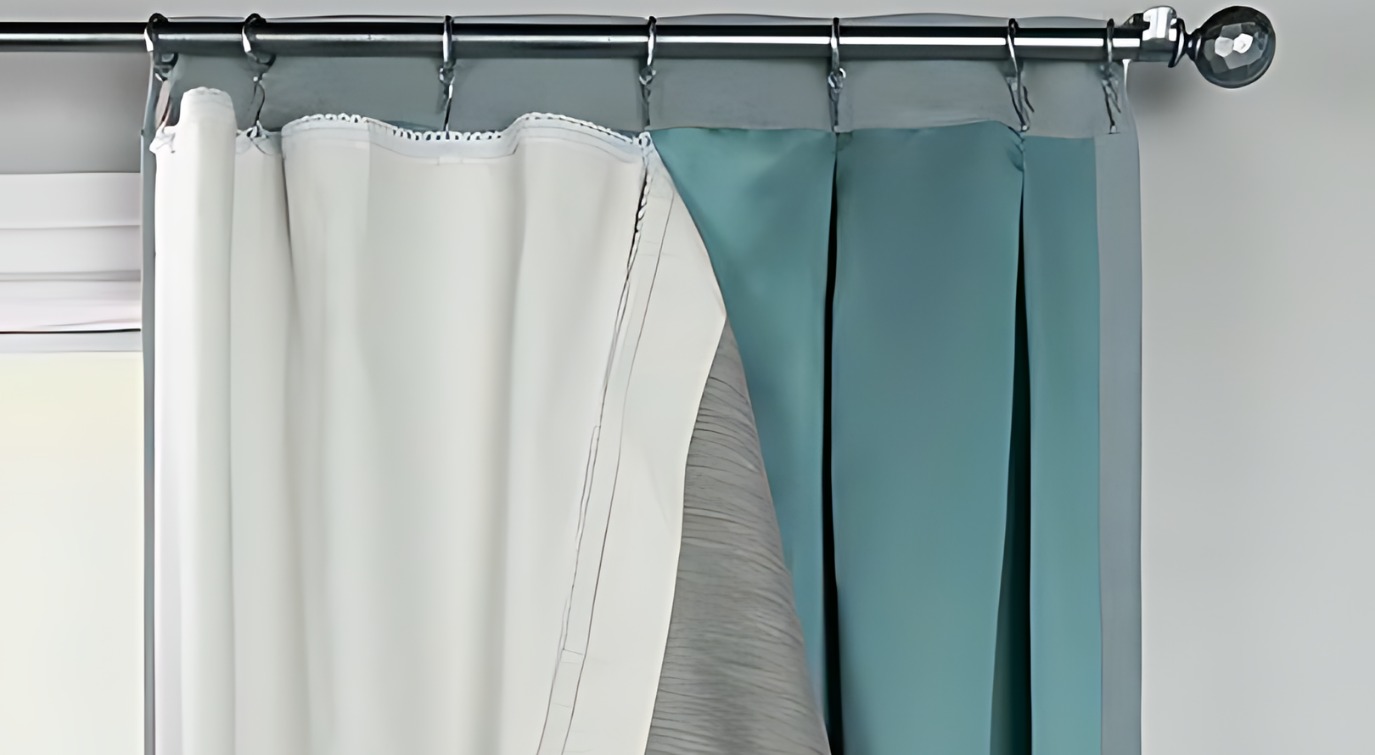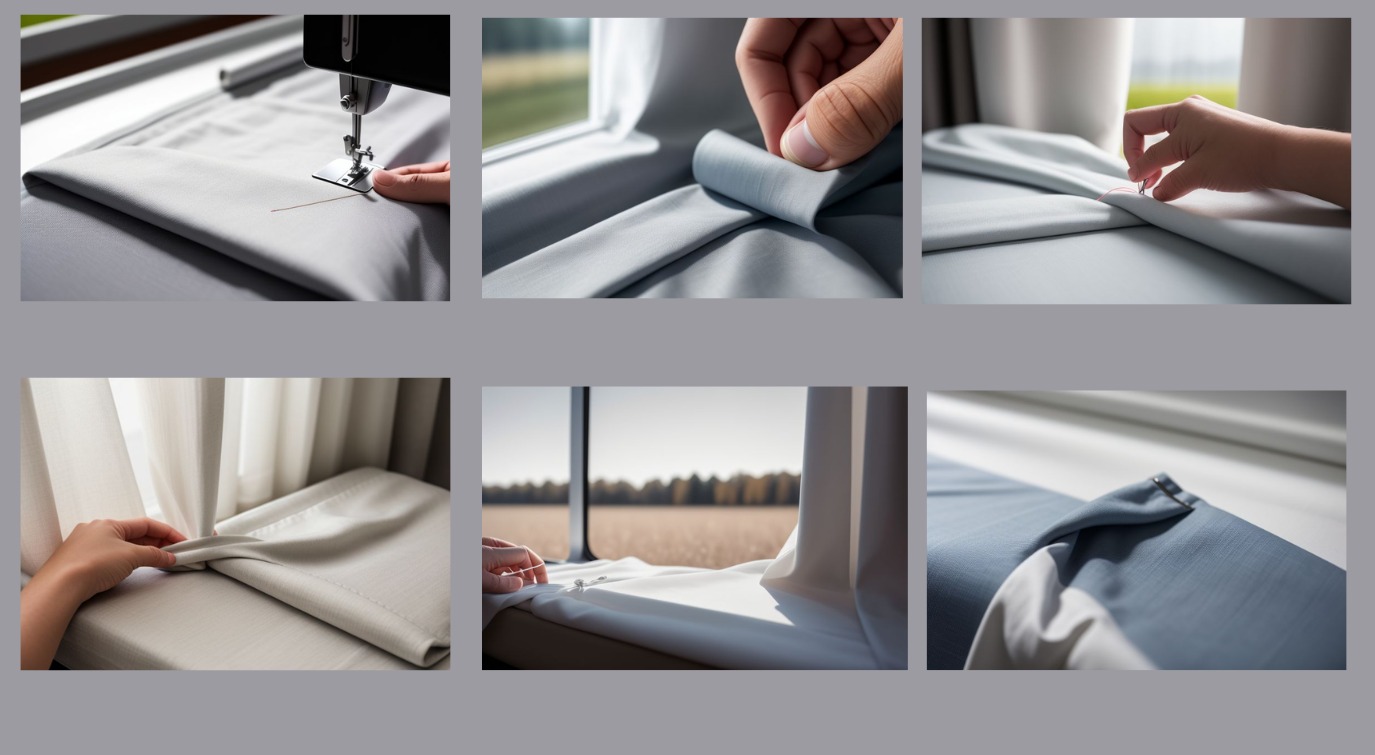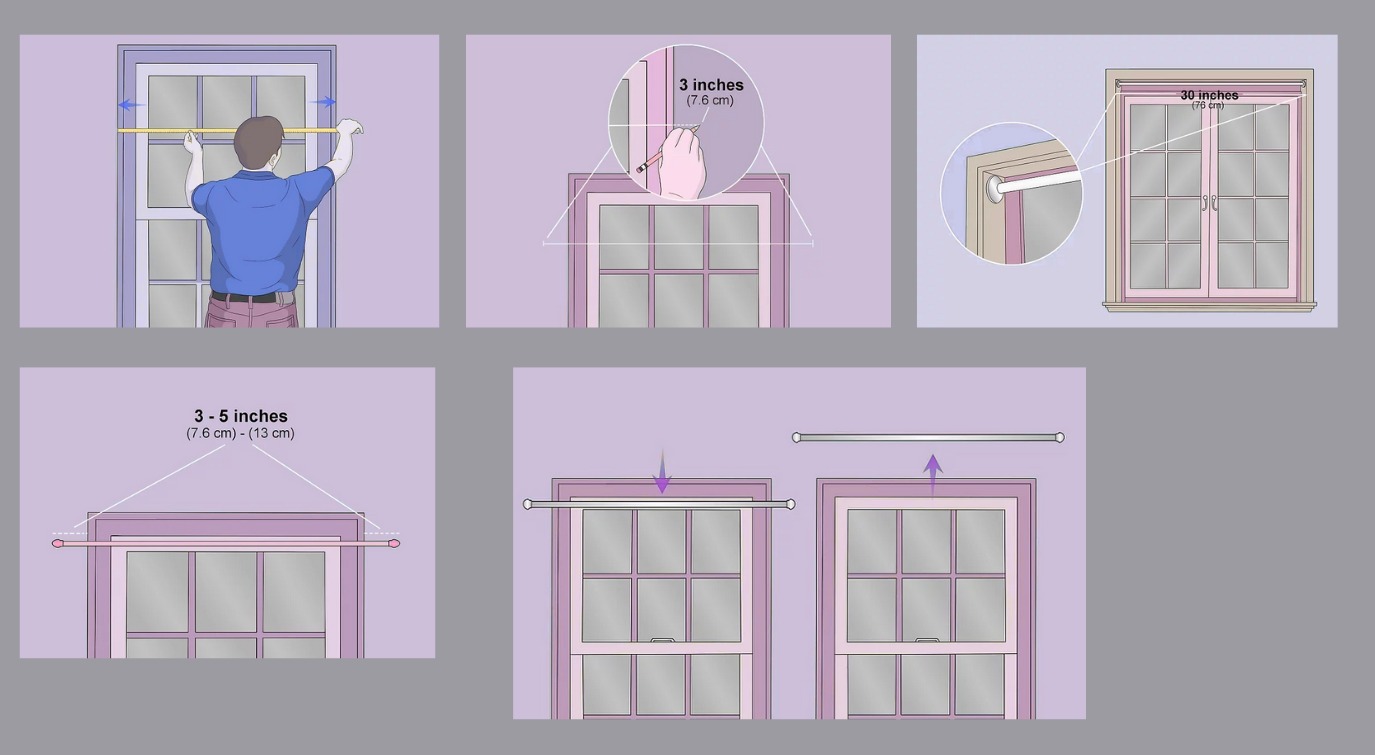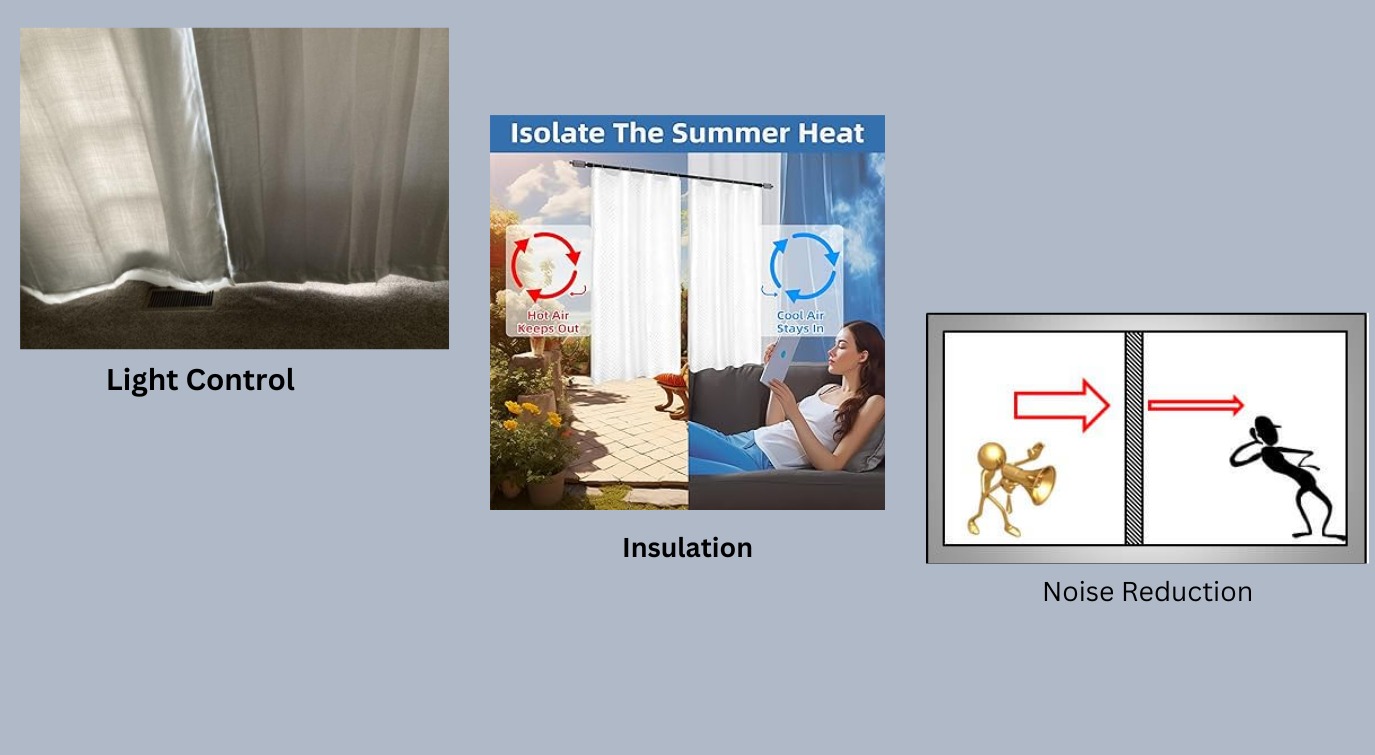
Using curtain liners with tab curtains can be a great way to add an extra layer of privacy and insulation to your windows. Here are some steps to follow when using curtain liners with tab curtains:
Sewing Pockets in the Hem of the Liner

- Determine the width of your curtain liner and divide it by the number of tabs on your tab curtains.
- Measure and mark the center of each tab on the curtain liner.
- Sew a small pocket at each mark on the curtain liner.
- Drop the washers in the pockets to hang the liner behind the curtain on the same rod.
Using Ties to Attach the Liner
- Determine the width of your curtain liner and divide it by the number of tabs on your tab curtains.
- Measure and mark the center of each tab on the curtain liner.
- Cut a length of ribbon or cord for each tab.
- Slip one end of the ribbon or cord through the liner holes and tie it to the tab.
Using Another Shower Rod for Shower Curtains
- Hang the shower curtain on the rod as you normally would.
- Hang the curtain liner on a lower shower rod that lines up with the top of the curtain.
When making tab top curtains, you'll need to determine how many tabs you'll need, with one tab at each end of the curtain and then in between every five to eight inches. Fold the tabs in half and place them upside down on the curtain, lining up the raw edges of each tab with the raw edge of the top of the curtain. Pin the tabs in place and sew each tab to the top of the curtain using a half-inch seam allowance.
Spacing Drapery Pins and Ring Clips

When hanging curtains with drapery pins and ring clips, a good rule of thumb for spacing the pins is 4"-6" apart. If the curtain has a rod pocket or tab option, you'll need to adjust the spacing accordingly. To make inserting the pins quick and easy while keeping things consistent across the panel, make vertical lines at every 5" (or whatever spacing you chose) from one end of the panel to the other. In addition to these marks, you will want to go through and make horizontal marks over each vertical one denoting 1.25" up from the bottom of the rod. This is the point at which you should insert the drapery pin.
How to remove curtain liners from tab curtains?
To remove curtain liners from tab curtains, you can follow these steps:
- Determine how the liners are attached to the curtains. If they are sewn in, you will need to carefully cut the stitches that attach them.
- If the liners are attached with ties, you can simply untie them from the tabs.
- Once the liners are detached, you can remove them from the curtain rod.
- If the liners are heavily soiled or stained, you may want to consider cleaning them before reusing them or discarding them.
It's important to note that removing curtain liners may affect the appearance and functionality of the curtains, as the liners can provide additional privacy and insulation. If you are unsure about removing the liners, you may want to consult a professional or consider alternative options for cleaning or maintaining the curtains.
How do you choose the right size of curtain liners for your tab curtains?

When selecting curtain liners for your tab curtains, it's essential to consider the size and style of your curtains to ensure a proper fit and functionality. Here's how you can choose the right size of curtain liners:
Measure Your Curtain Panels
- Width and Length: Measure the width and length of each curtain panel accurately.
- Consider Proportion: Ensure the liner size matches or is slightly smaller than your curtain panels for proper coverage and aesthetics.
Matching Liner Size to Curtain Size
- Width and Length Match: Select a liner that matches the width and length of your curtains.
- Proportionate Sizing: Choose a liner that is proportionate to the size of your curtains for adequate coverage.
Considering Curtain Heading Type
- Matching Heading Type: Ensure the liner has a heading that matches the style of your tab curtains for proper attachment and hanging.
- Pencil Pleat Matching: If your curtains have a pencil pleat heading, opt for a liner with a pencil pleat heading for a cohesive look.
Attaching the Liners to Tab Curtains
- Sewing Pockets: Sew small pockets in the hem of the liner and drop washers in for attachment.
- Using Ties: Slip ties through the liner holes and tie them to the tabs for a simple attachment method.
Ensuring Proper Fit and Functionality
- Size Discrepancy: Choose a liner slightly smaller than your curtains to prevent visibility and ensure a polished appearance.
- Lightweight Fabrics: For lightweight or sheer curtains, consider a liner that matches or is slightly larger for adequate coverage and light blockage.
what types of curtain liners are compatible with tab curtains?
Types of Curtain Liners Compatible with Tab Curtains
There are several types of curtain liners that are compatible with tab curtains, including:
Blackout Curtain Liners: These liners are designed to block out light and provide additional privacy. They are often made of heavy materials and can be used with a variety of curtain styles, including tab curtains.
Insulated Curtain Liners: These liners are designed to provide additional insulation and energy efficiency. They are often made of thick materials and can be used with a variety of curtain styles, including tab curtains.
Decorative Curtain Liners: These liners are designed to add a decorative touch to curtains and can be used with a variety of curtain styles, including tab curtains. They are often made of lightweight materials and can be used to add a pop of color or pattern to the curtains.
What are the benefits of using curtain liners with tab curtains?

Benefits of using curtain liners with tab curtains include:
Light Control: Curtain liners can help block out light and provide additional privacy, making them ideal for bedrooms and media rooms
Insulation: Curtain liners can help regulate room temperature and reduce energy costs by providing an extra layer of insulation
Noise Reduction: Curtain liners can help reduce noise and provide a quieter living environment
Protection: Curtain liners can help protect your curtains from fading and damage caused by direct sunlight







